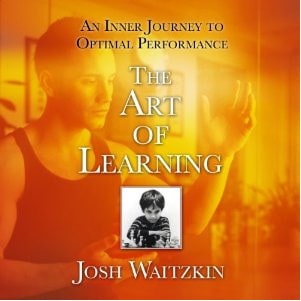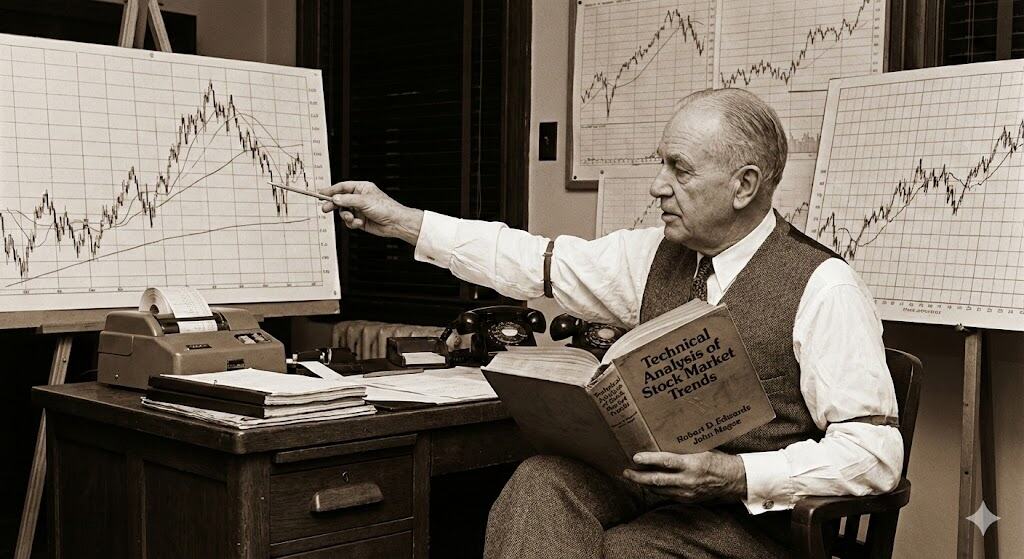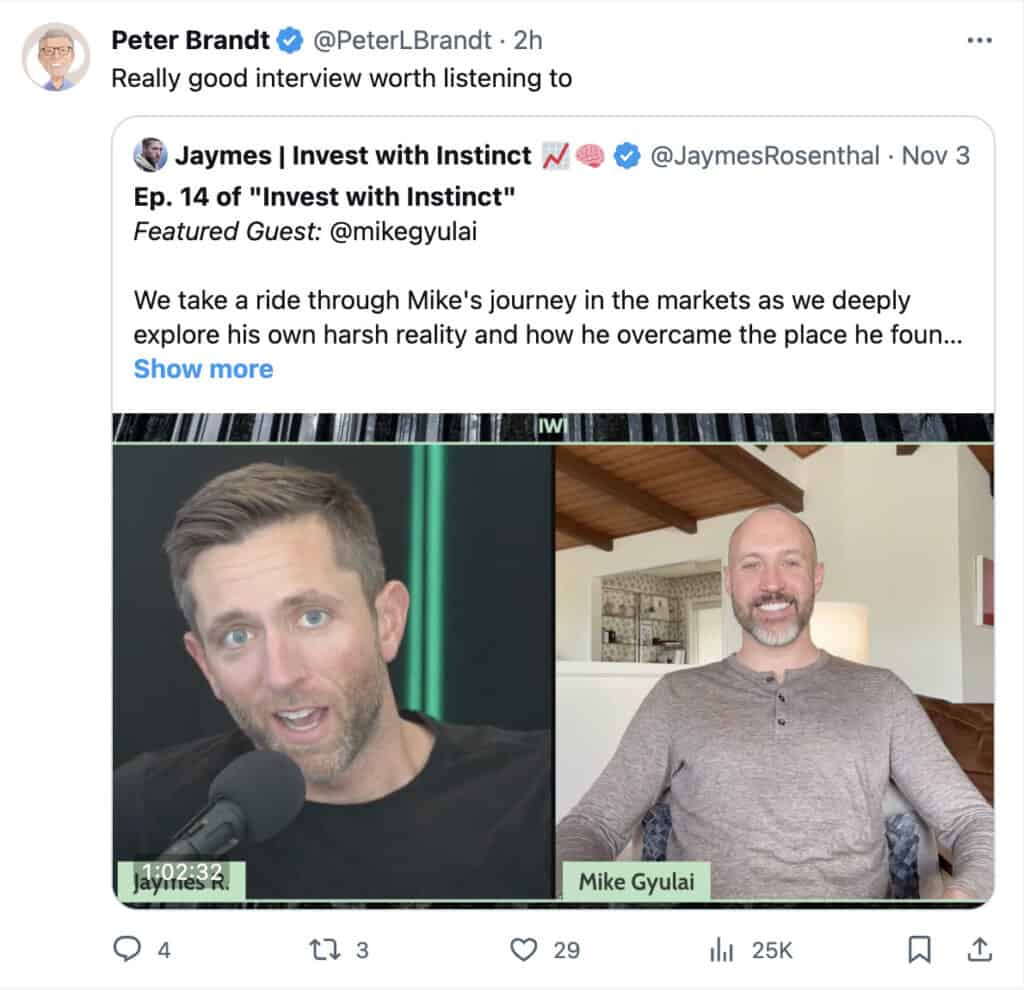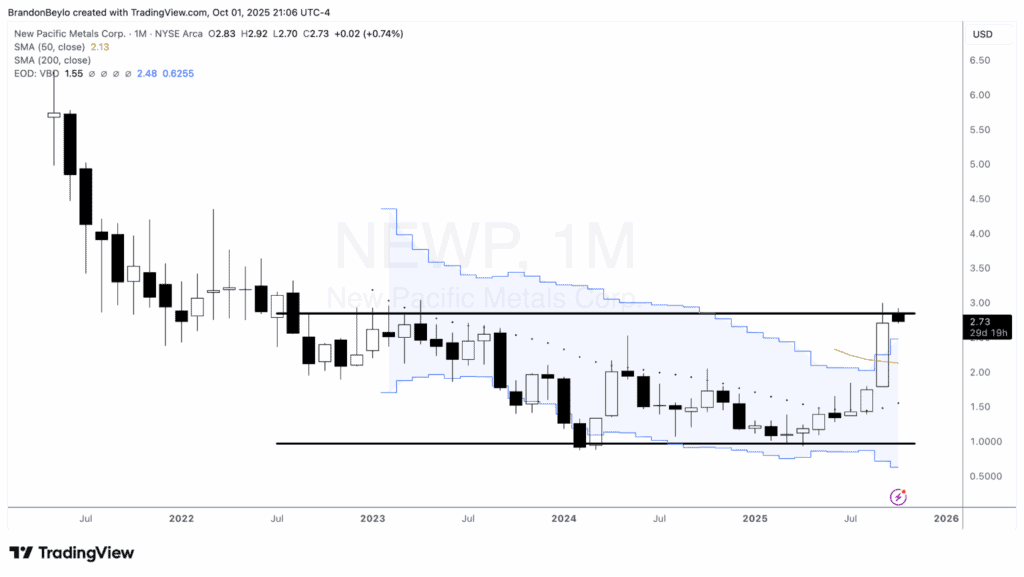“Evolution, Morpheus, evolution” – Agent Smith, The Matrix
I’m a performance nut.
Whether it’s trading, endurance racing, rock climbing, ju jitsu, or anything else. It doesn’t matter. If I’m doing it, then I’m obsessing over performance — and going to extreme lengths to improve and be better than the next.
This is why trading and investing appeals to me. I like challenges. And there are few games more challenging than the markets.
A big part of what we do at Macro Ops is study other top performers.
And not just legendary traders, but the top 0.1% of performers from a variety of fields and disciplines.
We dissect their daily habits, thought processes, and mindsets to find commonalities and linkages to success. We do this with the hopes of updating our own internal processes to improve our game.
It’s a constant journey, an arms race of sorts, on the path towards complete mastery.
Like Agent Smith said, it’s all about “Evolution, Morpheus, evolution.”
A book that’s greatly shaped the way we approach this constant evolution is The Art of Learning, by Josh Waitzkin.
For those of you not familiar with Waitzkin, he was the subject of the popular 90’s movie Searching for Bobby Fischer.
Waitzkin was a child chess prodigy. He won his first National Championship (of eight total) by the age of nine. At 20 years old, he left the competitive world of chess and began devoting himself to learning Tai Chi Chuan.
Within four years, he became the Tai Chi Chuan push-hands World Champion.
Needless to say, Waitzkin is a Top Performer. The Art of Learning is the culmination of over five years of Waitzkin documenting his own learning processes.
He deconstructs his methods down to the microscopic level, and successfully relates these rather abstract concepts in an impressively cogent and understandable writing style.
The result is a book, comparable in content to Geoff Colvin’s Talent Is Overrated: What Really Separates World Class Performers from Everybody Else and Malcolm Gladwell’s Outliers: The Story of Success, but written in a first-hand narrative that makes for an entertaining and enjoyable read.
The following are some of my favorite take-aways and observations. There are abundant parallels to trading and investing throughout.
Start With the Fundamentals
Waitzkin stresses the importance of beginning with the core principles of your craft and attaining a strong grasp of the fundamentals.
Too many people try to delve into the complex before they fully grasp the basics. It’s important to “embrace an organic long-term learning process“. The journey to mastery is a long and difficult road. Patience with the process is essential.
Similar to how the heights of a skyscraper cannot be built without first constructing a solid foundation, the mastering of a skill must first begin with learning the fundamentals.
The learning principle is to plunge into the detailed mystery of the micro in order to understand what makes the macro tick.
Marine Corps Scout Snipers, generally regarded as the best combat precision shooters in the world, train to hit moving targets at up to a 1,000 yards.
When they start their training they spend months practicing their shooting positions and dry firing (pulling the trigger without ammunition) before they ever shoot live ammunition.
To a casual observer this probably seems superfluous — how much can go into a prone shooting position? Well the answer is… A LOT. Without mastering the basic but essential skill of a solid shooting position, the sniper will never reach out and knock targets a click away. I know this because I used to be a Marine Scout Sniper.
The truth is, there are often many subtleties and nuances in the basic fundamentals of a skill.
These are often invisible to the beginner because their skills are below the level where the cracks in their foundation become apparent. As a result… these nuances become easy to gloss over.
Those who seek higher levels of performance must first master the very basics of their craft.
Expand and Refine
You start with the fundamentals, get a solid foundation fueled by understanding the principles of your discipline, then you expand and refine your repertoire, guided by your individual predispositions, while keeping in touch, however abstractly, with what you feel to be the essential core of the art.
When you’ve developed a solid grasp of the fundamentals, you can then branch out and expand your toolkit to increasingly more complex skills. This is where you begin finding your “style” of play.
You should not strive to imitate other styles or forms that do not naturally fit with your own predispositions. Doing so will likely create internal conflicts, and as a result, hinder development.
For example, a value investor should not try to buy into momentum names with astronomical valuations. Buying high contradicts the investor’s beliefs about the market. This internal conflict would then interfere with the confidence needed to successfully buy relatively cheap “value” plays in accordance with the investor’s original strategy.
Waitzkin stresses the importance of staying “true to yourself” while developing your skill set. Your craft should serve as a form of natural self-expression. This allows the creative process to flow organically, and is conducive to the deeper level introspection that enables advanced learning.
Make Smaller Circles
Once you’ve established a foundation and built a repertoire of personalized tools, you can then begin to intensely ingrain those processes into your subconscious.
Waitzkin uses the analogy of “making smaller circles”. This concept means to continually refine and deeply internalize your skill set.
It’s rarely a mysterious technique that drives us to the top, but rather a profound mastery of what may well be a basic skill set.
The more you tweak, practice, and perfect the minutiae of your craft, the more your subconscious mind builds connections. When old processes — which previously took focused effort — become internalized as part of your subconscious network, you can begin to focus on additional processes simultaneously. All while still expending the same amount of energy.
As more and more of your processes become internalized, your conscious mind becomes free to operate in the present. This has the effect of slowing down your perception of time. It’s in this state where really interesting things begin to happen. This phenomenon is often referred to as being in the zone.
Through the process of making smaller and smaller circles, you become more attuned with your strengths and weaknesses. This allows you to isolate the areas of your game that need to be tightened up.
In his book, Waitzkin is constantly seeking players (in both chess and push-hands) that are better than him, or that play to a weak spot in his game. Through this constant state of challenge, he’s able to develop and evolve much quicker than those that stay in calm waters.
Growth comes at the point of resistance. And for the champion, the process continues forever. The journey to mastery is a road with no end.
Presence of Mind
The importance of maintaining presence and clarity of mind, especially after a mistake, is drilled home throughout the book.
The first mistake rarely proves disastrous, but the downward spiral of the 2nd, 3rd, and 4th error creates a devastating chain reaction.
It’s part of human nature to be inclined to act on emotion, completely disregarding logical consequences. We see this behavior time and time again in sports. The professional golfer that botches a putt and follows up quickly, only to miss what should have been a tap in. Or the poker player on tilt who starts making irrational bets after a bad beat.
Waitzkin discusses the need to remove ourselves from this vicious cycle. He says the way to accomplish this is to separate our conscious mind from our emotional state. This allows us to remain present in the task, and clear in our logic, by seeing emotions for what they are — versus letting them dictate our actions.
Once you’ve successfully mastered objectiveness in your thoughts and actions, you can begin to channel these emotions to your benefit.
There are those elite performers who use emotion, observing their moment and then channeling everything into a deeper focus that generates a uniquely flavored creativity. This is an interesting, resilient approach based on flexibility and subtle introspective awareness. Instead of being bullied by or denying their unconscious, these players let their internal movements flavor their fires.
Culmination
Once you reach a level of mastery in your craft, each “principle loses rigidity, and you get better and better at reading the subtle signs of qualitative relativity. Soon enough, learning becomes unlearning.”
Waitzkin notes, that “the stronger chess player is often the one who is less attached to a dogmatic interpretation of the principles. This leads to a whole new layer of principles — those that consist of the exceptions to the initial principles.“
Bruce Lee (a personal idol of mine) is a great example of this concept. His efficiency in many fighting styles allowed him to transcend the restriction of any adherence to a single form. He only used what worked and what flowed naturally through his process of self expression.
Lee touched on the importance of fluidity, when he said:
Be like water making its way through the cracks. Do not be assertive, but adjust to the object, and you shall find a way around or through it. If nothing within you stays rigid, outward things will disclose themselves.
Nurture over Nature
For those of you set on living lives of constant evolution, embracing strife for the sake of growth, and devoting yourself to mastering the means of self expression, I suggest you pick up a copy of The Art of Learning.
The knowledge within these pages is invaluable to any trader or investor aspiring for greatness. The book drives home the wisdom that mastery is all about an unrelenting focus on process… and not on outcomes.
If you heed that message and take it to heart, you should do quite well in trading.
I’ll end with a quote from a personal hero of mine, Theodore Roosevelt (a man who never shied away from challenges):
Far better it is to dare mighty things, to win glorious triumphs, even though checkered by failure, than to take rank with those poor spirits who neither enjoy much nor suffer much, because they live in the gray twilight that knows not victory nor defeat.








